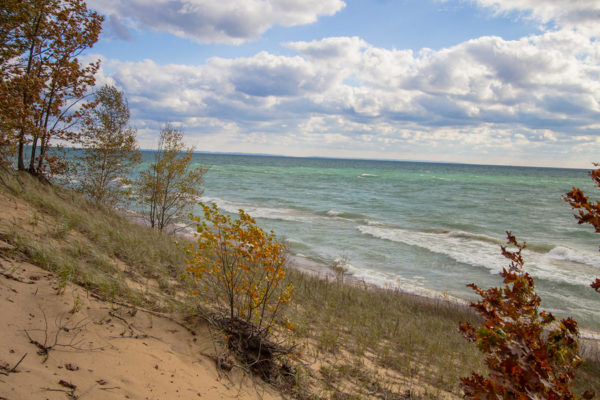Rights to the Lake Michigan Shoreline
Who owns the rights to the Lake Michigan shoreline? This question has been hotly contested in the Indiana courts in recent years following a dispute between lakefront landowners and the Indiana Department of Natural Resources (DNR) in Long Beach, Indiana.
Long Beach, which spans three of Indiana’s 45 or so miles of Lake Michigan frontage, has long recognized the DNR’s boundary line between publicly and privately-owned beach. In 2014, Long Beach landowners Don H. and Bobbie J. Gunderson (Gundersons) protested the rule, leading to a lawsuit against both the State of Indiana and the DNR for their rights to their lakefront property up to what is known as the ordinary high-water mark (OHWM).

The OHWM is the ordinary delineation of the lake and shore (or what looks like the usual boundary between land and lake due to erosion, etc, i.e., the water’s usual edge). OHWM can also be described as the point at which the presence of water may end, due to natural fluctuations of water levels. This could be considered the natural line between beach and vegetation. Indiana law gives the DNR the authority to establish the location of the OHWM on Lake Michigan (accounting for fluctuating water levels, so the line remains in the same place). In this case, the Gundersons argued that their ownership of the beach extended to the water’s edge, or wherever the edge was at the time.
Initially, the Indiana Court of Appeals decided that the boundary of the landowners’ lot, which was unclear from their property deed and subdivision plat, extended to the water’s edge. The Court also decided that the beach was subject to use by the public under the “public trust doctrine”, which provides states the ability to hold in trust public areas such as a lake’s exposed shoreline for public use. This decision determined that the land between the OHWM and the water’s edge represented an overlap in public and private interest.
The Indiana Supreme Court disagreed, relying on the “equal-footing doctrine,” which provides that at the time that, Indiana became a state in 1816, it acquired title to shore land up to the natural OHWM, including navigable submerged lands (or the “land” beyond the waterline that may be navigated by watercraft). As such, the Supreme Court determined that there is no overlap of private ownership and public trust lands on Indiana’s beaches. The legal boundary between public and private lands is the OHWM, which may be designated by the DNR, meaning that the landowners’ deeds did not include any shore below the OHWM and any exposed land below that line may be used by the public.
After the Indiana Supreme Court denied the landowners’ petition to rehear this landmark case, the landowners were given until October 5, 2018 to file their Writ of Certiorari, or request for high court review, with the United States Supreme Court. The landowners asked the U.S. Supreme Court to consider how “the ‘ordinary high-water mark’ is defined for large non-tidal lakes with extensive beaches- such as the Great Lakes.” However, the U.S. Supreme Court denied the landowners’ petition for writ of certiorari, allowing the decision made by the Indiana Supreme Court to stand.
Now that the law dictates that the public may use Indiana’s Lake Michigan shores many new questions arise: What types of public use are acceptable and protected by law? How far can the State provide for permitting uses on the shore? Can it license the shore to vendors? Can someone camp or build a small dwelling on the shore? Ultimately, the Indiana Supreme Court held that the public may, at minimum, walk on the shore below the OHWM, and invited the legislature to further define the permitted activities on the shores of Lake Michigan.
At the Indiana Supreme Court’s suggestion, the Indiana General Assembly is attempting to answer some of these questions. Senate Bill 553, which passed the Senate Natural Resources Committee 5-3, seeks to answer address what constitutes public rights on Indiana’s beaches. The bill defines public use as activities that are not considered public nuisance, such as sunbathing, swimming, fishing, canoeing. and other such activities. Other proposed legislation, Senate Bill 581, protects public rights to the beach by defining the shore as the land between the OHWM and landowners’ property lines. Both bills aim to better define the shore for the protection of the public and the landowners on Lake Michigan.
*Gunderson v. State, 90 N.E.3d 1171 (Ind. 2018)